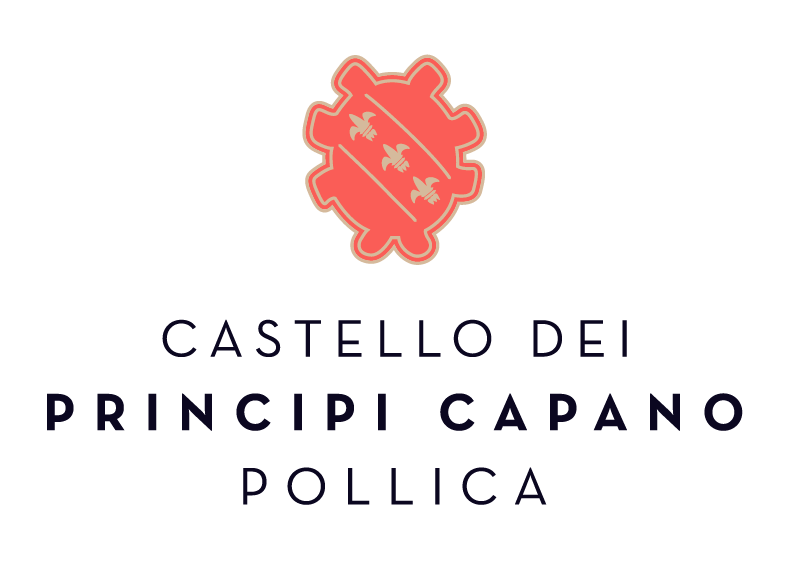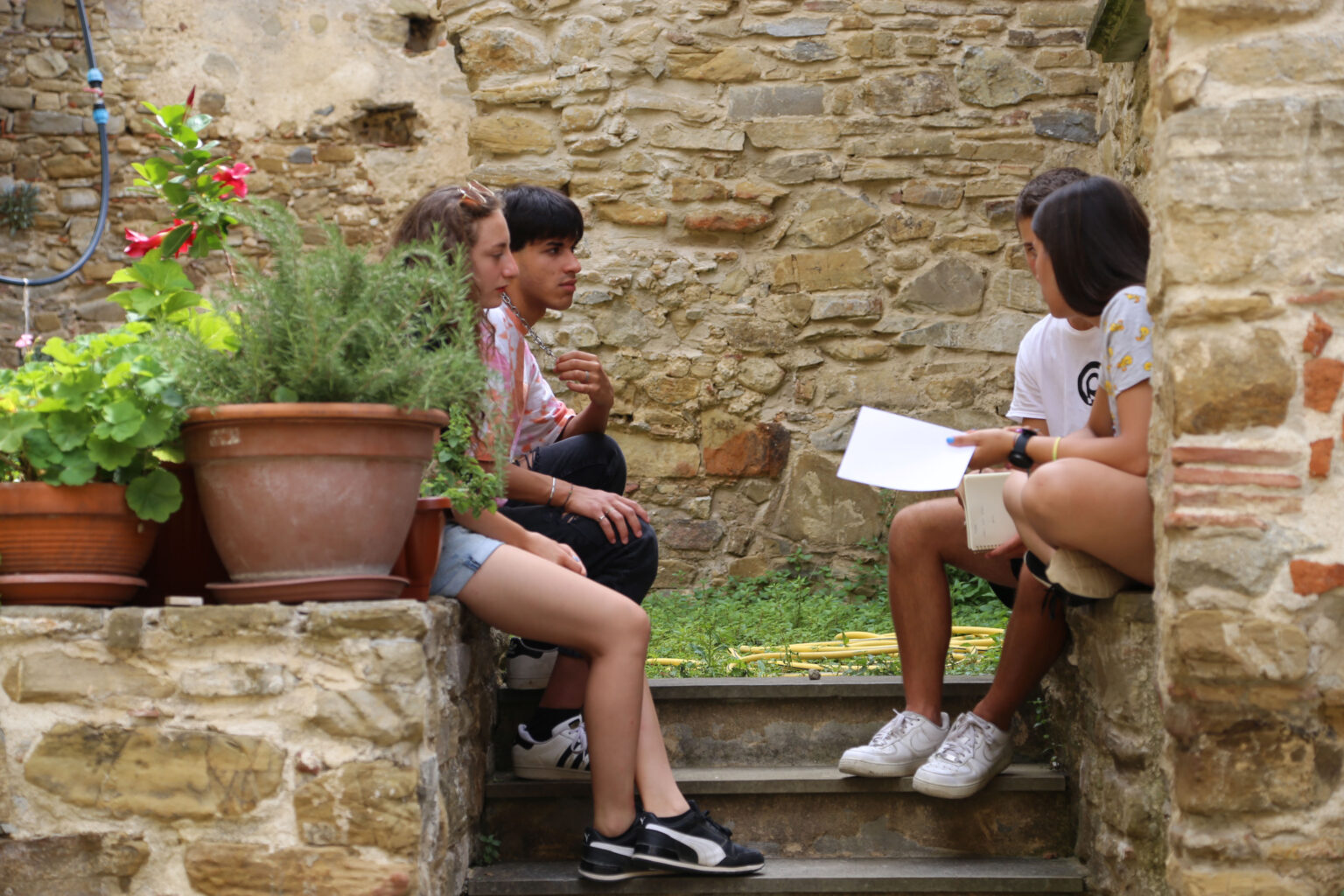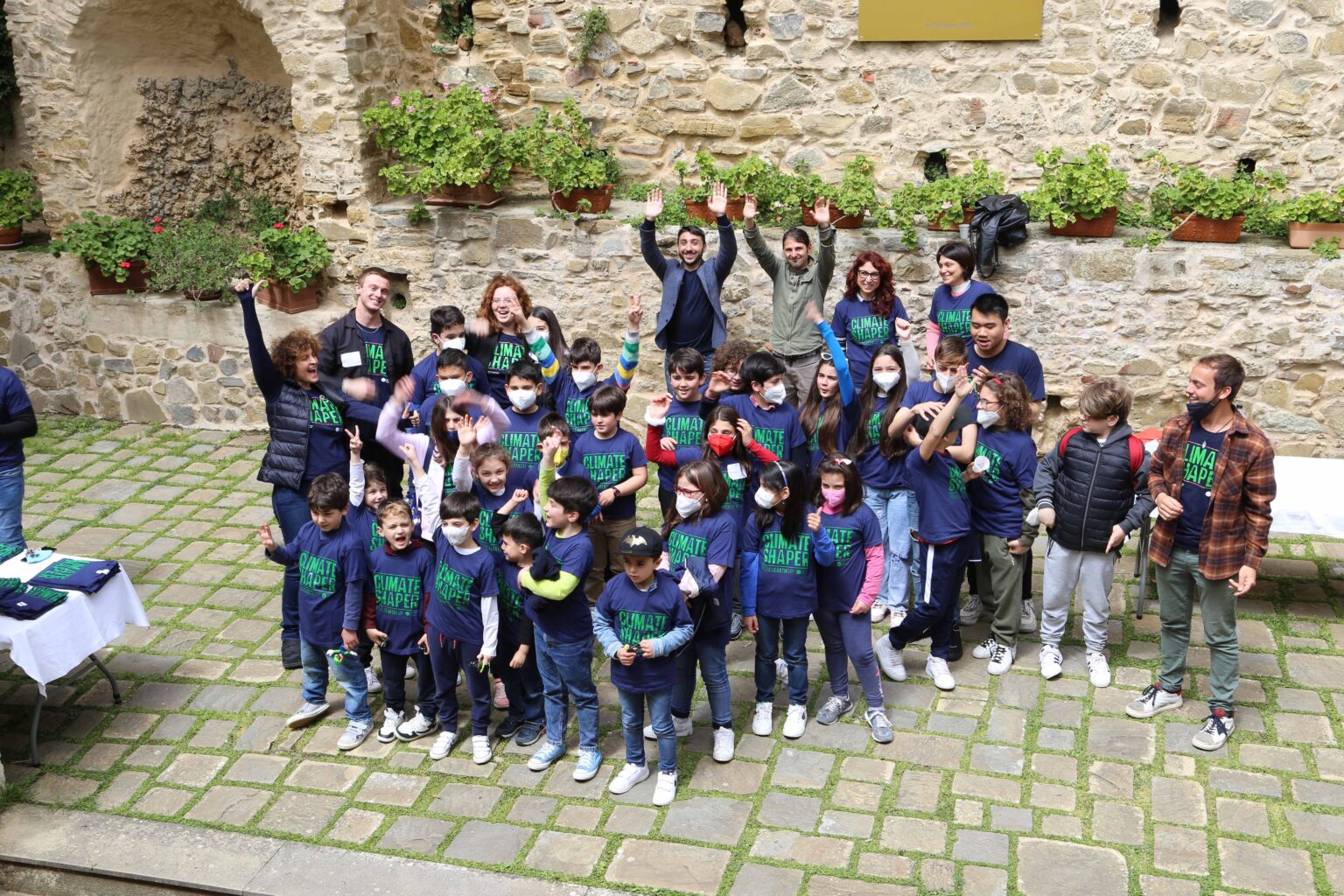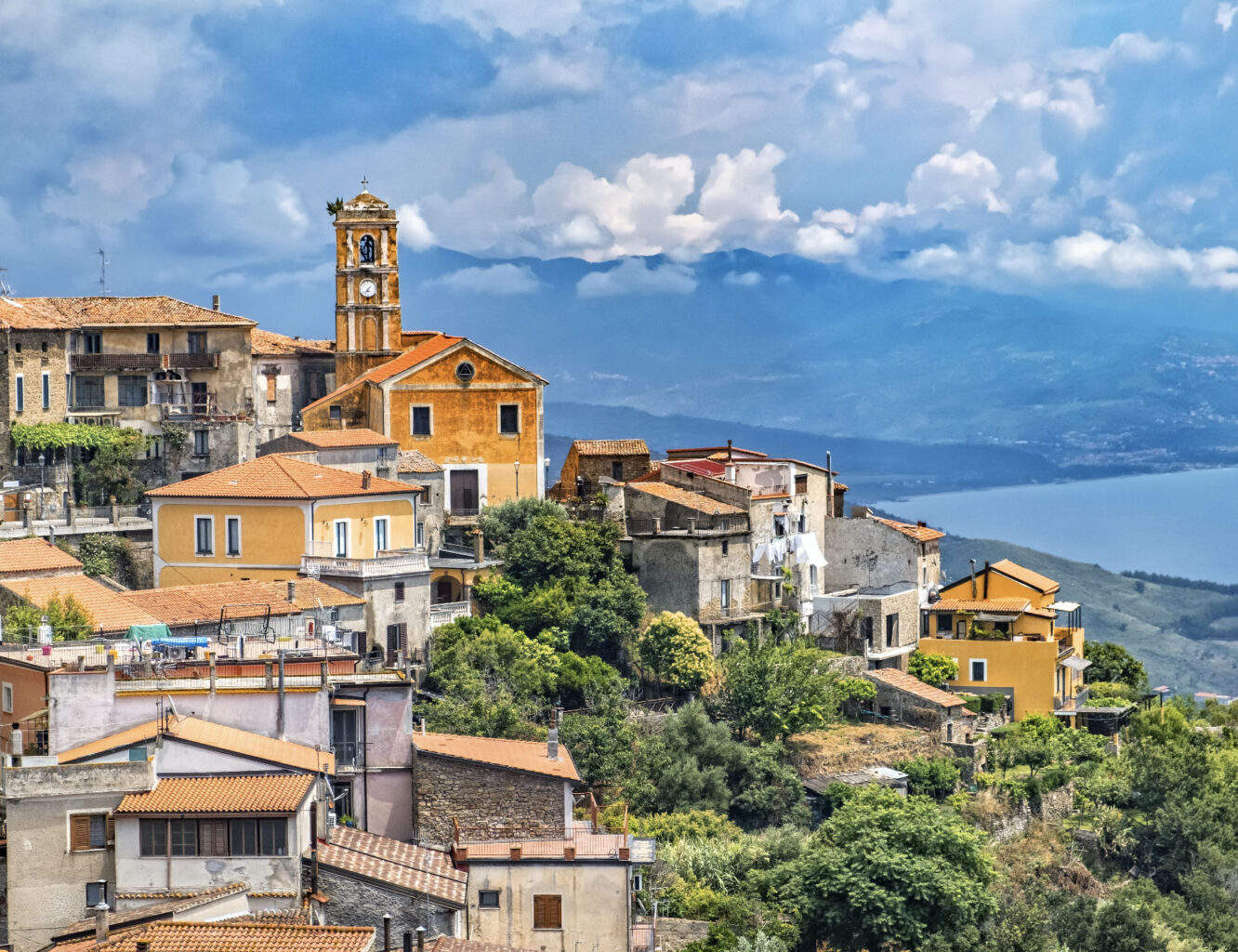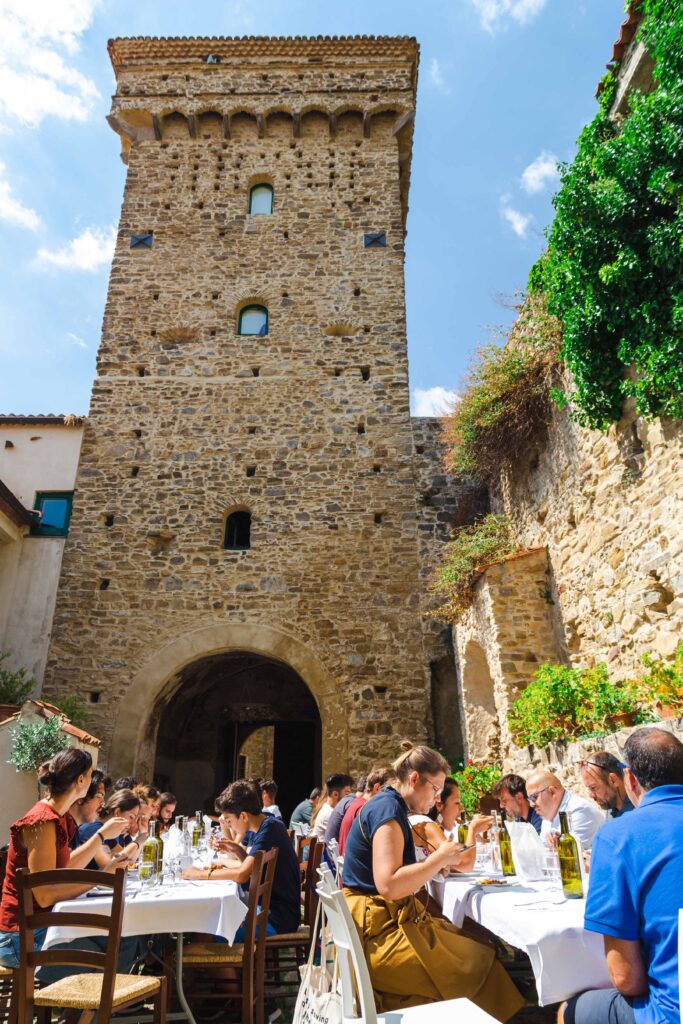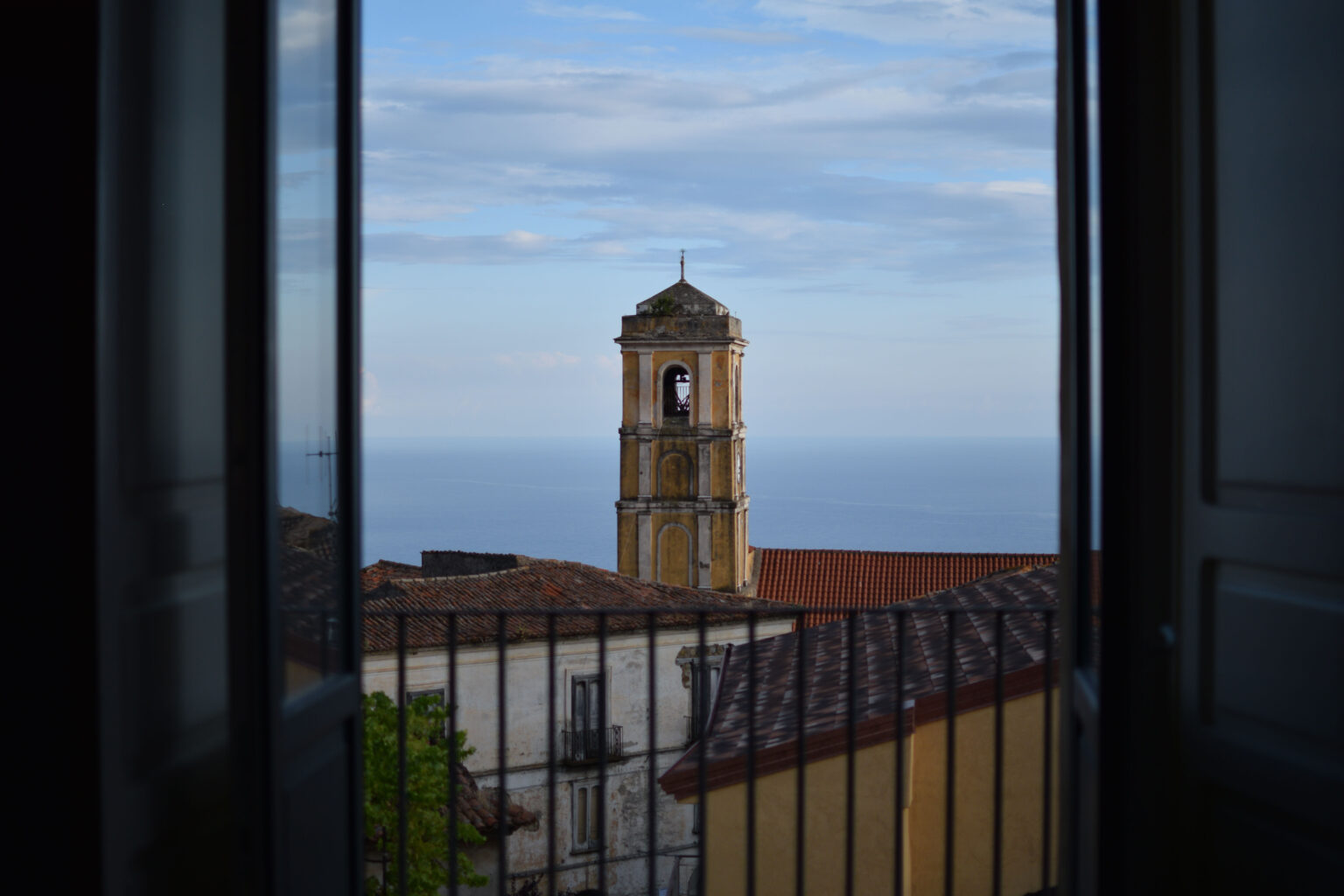About the Castle
The Castle of the Capano Princes was built in 1290 by Guido d’Alment, who came to Italy in the retinue of Charles I of Anjou and was later acquired by the Capano family, along with the entire fiefdom of Pollica. What appears to us today is the castle resulting from the 1610 renovation ordered by a distinguished member of the family, Vincenzo Capano, 15th prince of Pollica. Since then it has not undergone major changes, in fact the few renovations carried out were done with traditional materials, so the result is a substantial homogeneity and continuity in the steps of the architectural structure.
Placed in the heart of Pollica, right above the main square, the castle retains its distinctive features in the various rooms and spaces that compose it, including the oil mill (l’ugliaro), stables and guardhouses. At first glance it may appear as a castle designed for the defense of the village, but in reality it was also and above all an elegant provincial residence. The mighty walls, narrow windows, and arquebus loopholes that keep the main entrance in check support the first thesis; while the vastness of the rooms, the elegant gateway, and the tower itself, which towers over all the other surrounding buildings, make it seem much more an expression of the prestige of the powerful Capano family. The medieval tower that seems to rise from the sea, square in plan on three floors that each take light from a single-lancet window, is the symbol of Pollica and gives the impression of guarding it, along with its inhabitants and its historical memories.
In 1941, the Castle was recognized as a site of historical-artistic interest and in 1997 it was purchased by the municipality, becoming a heritage of Pollica and the Pollichesi.
Today the Castle enjoys a second life, transformed into an international center dedicated to training and research on the themes of the Mediterranean Diet, to give continuity to the work of Margaret and Ancel Keys, famous American researchers who decided to move to Pollica, living there for 40 years to study the benefits on mind and body of such eating habits.
The Castle is now home to both the Paideia Campus and the “Angelo Vassallo” Mediterranean Diet Study Center. The former is a project of the Future Food Institute, launched in May 2021, which aims to develop and teach new strategies for sustainable development and integral ecology with the collaboration of local institutions. The second, inaugurated in 2010, is a research hub that aims to educate and inform people about the importance of the Mediterranean lifestyle to take care of the well-being of the individual and their spaces. The Center is named after the former mayor of Pollica Angelo Vassallo, whose commitment and work contributed to the revalorization of the town and was the main promoter of the initiative that led the Mediterranean Diet to be recognized as a UNESCO intangible heritage in 2010.
Pollica’s importance for the promotion and dissemination of Mediterranean values is recognized worldwide, so much so that it has been entrusted with the responsibility of coordinating the emblematic Mediterranean Diet community for the year 2022. In addition, the great work done by local governments and these research institutions has enabled the city to be selected as a Living Lab for the Cities2030 network and as a reference point for the New European Bauhaus project.
Thanks to these partnerships, the Castle of the Princes of Capano is now much more than a historic and artistic site, as it has become a vibrant and dynamic venue for cultural, institutional, and community activities and events. It is a fire that does not want to stop burning, trying to “burn out” the problems of abandonment and impoverishment that plague inland Cilento.
